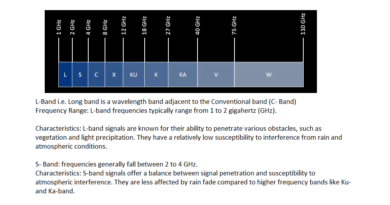Sagar Parikrama
Context:
The Ministry of Fisheries, Animal Husbandry and Dairying will inaugurate the ‘Sagar Parikrama’ to know the problems of Coastal Fisher folk.
Sagar Parikrama:
- As a mark of gratitude to our seas, Sagar Parikrama Program is saluting our great freedom fighters, sailors and fishers.
- The first leg of ‘Sagar Parikrama’ shall begin from Gujarat on 5th Feb 2022 for 2 days.
- Objective: Sagar Parikrama aims to focus on the sustainable balance between the utilization of marine fisheries resources for food security of nation and livelihoods of coastal fisher communities and protection of marine ecosystems.
- Organization of the Program: Sagar Parikrama program is proposed to be celebrated in all coastal states/UTs.
- Sagar Parikrama Program is to be celebrated through a pre-decided sea route down right from Gujarat, Diu, Maharashtra, Goa, Karnataka, Kerala, Tamil Nadu, Andhra Pradesh, Odisha, West Bengal, Andaman & Nicobar and Lakshadweep Islands.
- Sagar Parikrama Program is to have an interaction program with fishermen, fisher communities and stakeholders in these locations and districts.
Significance:
- It will focus on sustainable balance between the utilization of marine fisheries resources for food security of the nation and livelihoods of coastal fisher communities and protection of marine ecosystems.
- Oceans are vital to the economies, security and livelihoods of Indian coastal states.
- The Country has a coastline of 8118km, covering 9 maritime States/4UTs and providing livelihood support to millions of coastal fisher folk.
Parent Ministry and Other Stakeholders:
Sagar Parikrama is to be celebrated by the Department of Fisheries, Ministry of Fisheries, Animal Husbandry and Dairying, Government of India and National Fisheries Development Board along with-
- Department of Fisheries, Government of Gujarat,
- Indian Coast Guard,
- Fishery Survey of India,
- Gujarat Maritime Board and
- fishermen representatives
What is the Scenario of the Fisheries Sector in India?
- India is the second major producer of fish through aquaculture in the world.
- India is the 4th largest exporter of fish in the world as it contributes 7.7% to the global fish production.
- Currently, this sector provides livelihood to more than 2.8 crore people within the country. Nevertheless, this is a sector with untapped potential.
- The fisheries sector has demonstrated double-digit average annual growth of 10.87 % since 2014-15 with record fish production of 145 lakh tons during 2020-21 as per the Economic Survey for 2021-22
- Indian Fisheries and Aquaculture sector registering an average annual growth of 7.53% during the last 5 years. The country exported 12.89 lakh metric tons of fisheries products valued at Rs 46,662 crore (USD 6.68 billion) during 2019-20.
- Despite challenges pertaining to infrastructure, the measures by the Central government in the past recent years ensured that the fisheries sector continued to register an annual growth rate of more than 10%.
National Fisheries Policy 2020
The National Fisheries Policy 2020 has been drafted merging three existing policies, namely:
- National Policy on Marine Fisheries, 2017 (NPMF)
- Draft National Inland Fisheries and Aquaculture Policy (NIFAP)
- Draft National Mariculture Policy (NMP)
Post-harvest elements have also been integrated into the draft policy.
Background
- The Indian fisheries sector encompasses a diverse range of resources and ranges from the Himalayas to the coastal plains and the Indian Ocean.
- The sector employs millions of people and is a source of livelihood for them.
- The fisheries biodiversity also includes diverse physical and biological components.
- Fisheries are a very crucial source of food, livelihood, nutrition and income in India.
- The sector gives livelihoods to almost 16 million fishers and fish farmers at the primary level and about twice the number along the value chain.
- Fisheries have now become a commercial enterprise and its share in the GDP has increased from 0.40% in 1950-51 to 1.03% in 2017-18.
- India is one of the leading exporters of seafood in the world.
- It hence contributes to the foreign exchange also in a big way.
- Marine exports constitute about 5% of the total exports and about 19% of agricultural exports.
- The marine fisheries sector is dominated by the socio-economically backward artisanal and small scale fishers whose lives are closely intertwined with the oceans and seas. However, 75 percent of the total marine fish production comes from the mechanized sector, 23 percent from the motorized sector and only 2 percent from the artisanal sector.
- Additionally, fish is a cheap and good source of animal protein and hence, a good option to reduce hunger and malnutrition.
Draft National Fisheries Policy, 2020 – Strategies
Some of the important interventions under the scheme are given below.
- A state-level Inter-departmental Coordination Committee for Fisheries will be formed. The Agriculture Production Commissioner will be the chairperson of the committee.
- The GOI will formulate ‘Fisheries Management Plans’ (FMPs) for the scientific regulation & management of marine fisheries resources.
- The state governments will formulate Fisheries Spatial Plans along with the Central Government for data management, analysis, modeling and decision making.
- The government will develop an Integrated Fisheries Development Plan, especially for the islands to improve their share in the economy.
- A capacity appraisal framework will be developed to assess the feasibility of engaging in sea ranching for rebuilding stocks without changing the natural genetic diversity.
- The Fisheries Act will be updated to prevent the use of destructive gear in inland waters.
- A cluster-based approach will be implemented to develop aquaculture.
- Standards will be established for fish and fishery products in conformity with international food safety standards.
- Public Private Partnerships will be encouraged to leverage investments from the private sector into the fisheries sector.
What are the Initiatives related to Fisheries?
- Fishing Harbours
- Seaweed Park
- Pradhan Mantri Matsya Sampada Yojana
- Palk Bay Scheme
- Marine Fisheries Bill
- Fisheries and Aquaculture Infrastructure Development Fund (FIDF)
- Kisan Credit Card (KCC)
- Marine Products Export Development Authority
Source: PIB



